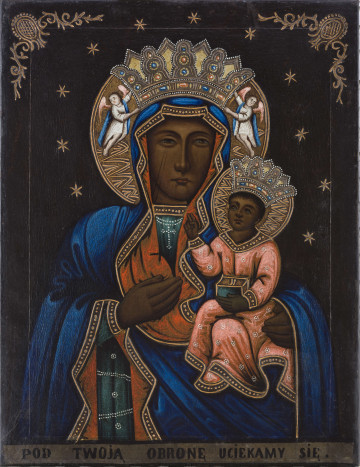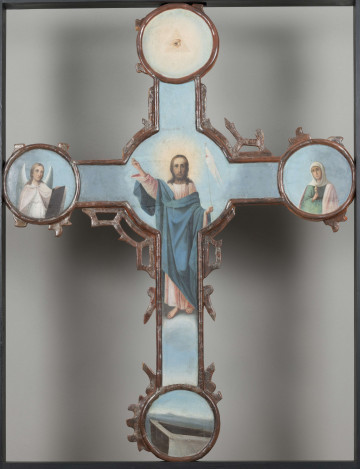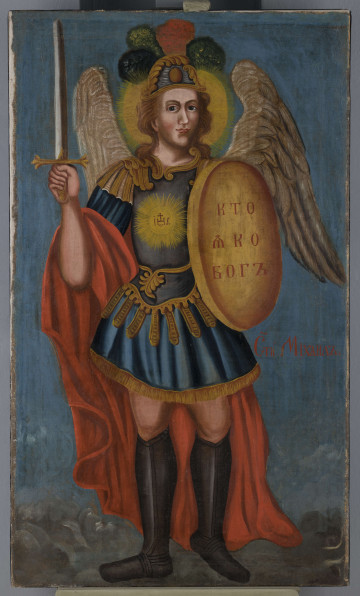
Black Madonna of Częstochowa
1901 — 1920
National Museum in Lublin
Part of the collection: Folk Art of the Lublin Region (17th–1st half of the 20th c.)
People' woodcarving developed in the second half of the 18th century and at the beginning of the 19th century. In villages and small towns, devotional pictures were mainly distributed by monks of various congregations. The creators of wood engravings came from guilds and workshops were situated in numerous pilgrimage places. Pilgrims bought images of miraculous Christological and Marian images or images of patron saints, believing that they brought divine protection to their families and households. Local pilgrimage sites such as Kodeń in Podlasie or Radecznica near Zamość were also popular. Secular, customary or illustrative themes were rarely taken up.
The wood used to prepare the block was usually apple, pear, cherry, lime, alder or beech. Often both sides of the boards were used. The largest prints were sometimes made from several blocks and glued together after printing. There were also boards with several images, which made it possible to obtain a sheet with different representations, ready to cut. Prints could be coloured by hand or through a stencil with water colours, glue paints or tempera paints.
Folk woodcuts were characterized by flatness, strong contour line, often enriched with lines of modelling hatching, which played mainly decorative role. The composition could be complemented with inscriptions, which testified to the artists as illiterate people or people with little knowledge of the art of writing. For example, the inscription BOZE, KTORYŚ,OPATRNŚCIĘ,SWOYĘ,PIĘĆ,TYSIECY,MEZOW,PIECIą CHLEBAMY Y DWIEMA.RYBAMI.NAKARMIŁ.ZMIŁUJSIę NADN should be read in reverse order - first the bottom line, then the top one.
The woodblock from which the woodcut was printed comes from Radecznica, a town in Roztocze, where a workshop connected with the sanctuary of St Anthony of Padua existed. The literature cites the names of three wood engravers working there in the 19th century: Andrzej Kotelski, Mikołaj Falewski and Jakub Olearski, who "had carved boards, which they used to grease with paint, and they sold the reflected images on paper at indulgence feasts for 5 groszy". Unfortunately, it is not known who the artist with the initials AH engraved on the woodcut Święta Rodzina [The Holy Family] on the other side of the block, the author of both representations, was.
Author / creator
Dimensions
cały obiekt: height: 30,5 cm, width: 36,5 cm
Object type
graphic print
Technique
woodcut
Material
Japanese paper
Creation time / dating
Creation / finding place
Owner
The National Museum in Lublin
Identification number
Location / status

1901 — 1920
National Museum in Lublin

1801 — 1900
National Museum in Lublin

1801 — 1900
National Museum in Lublin
DISCOVER this TOPIC
Castle Museum in Łańcut
DISCOVER this PATH
Educational path